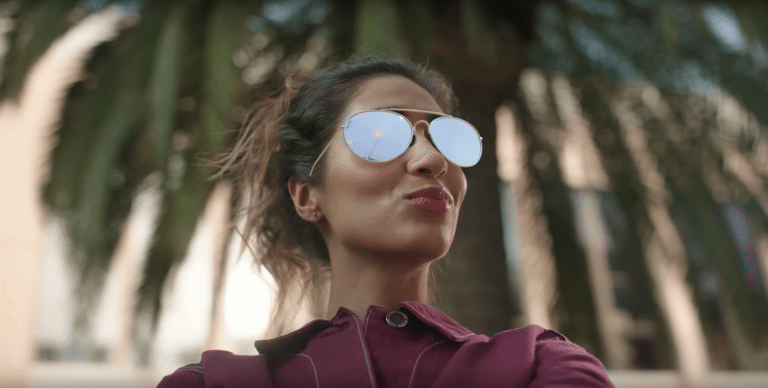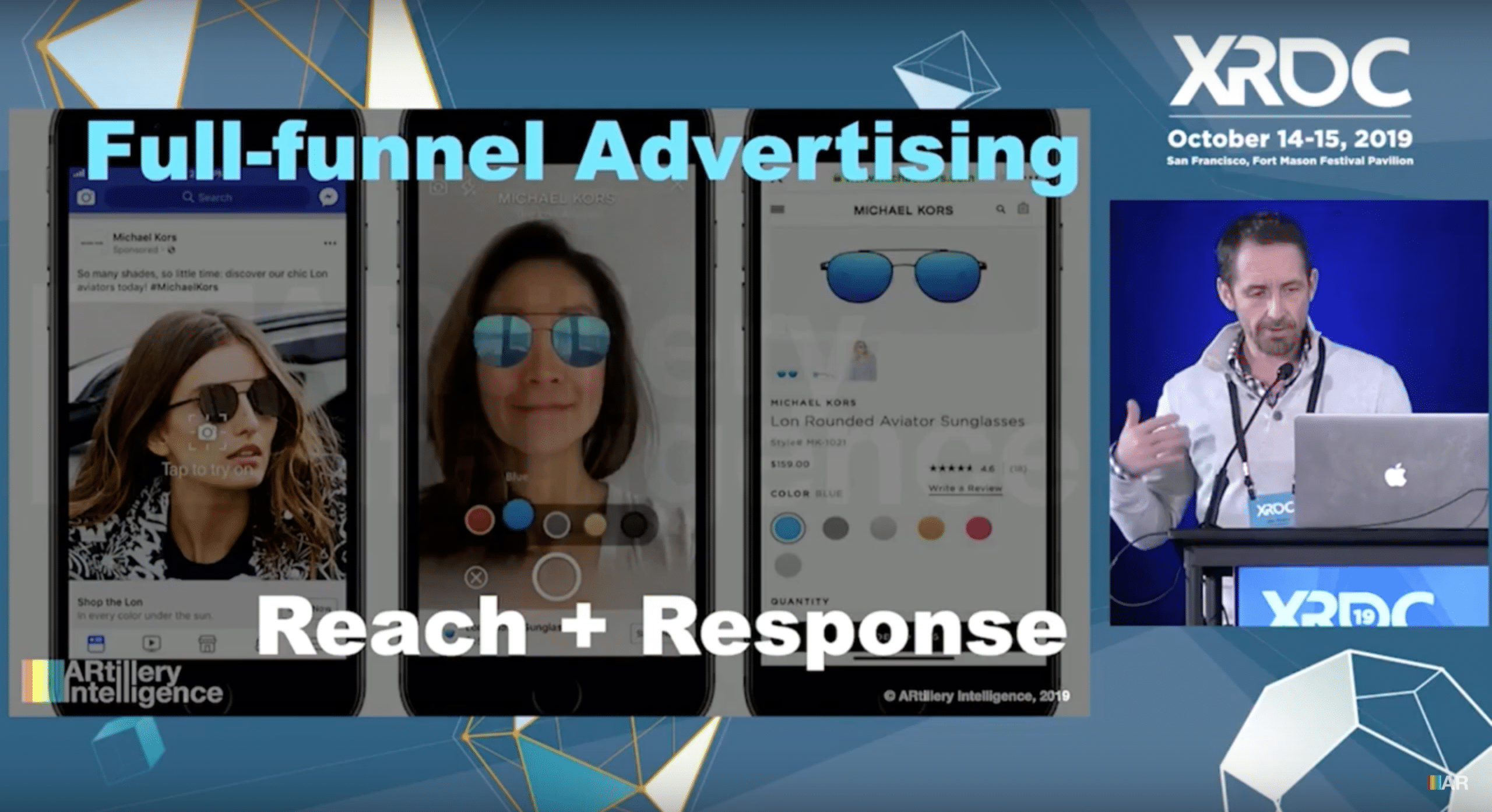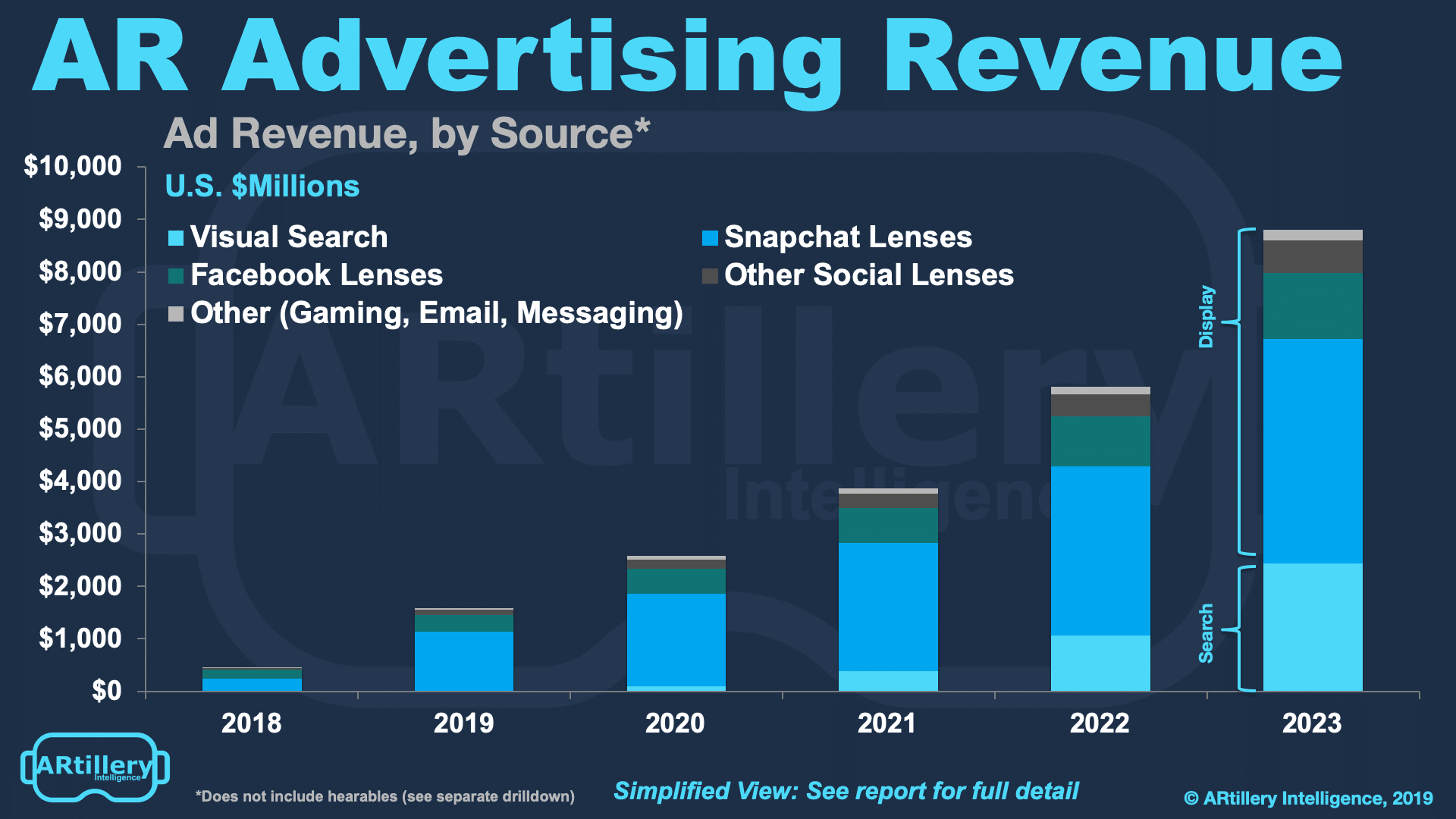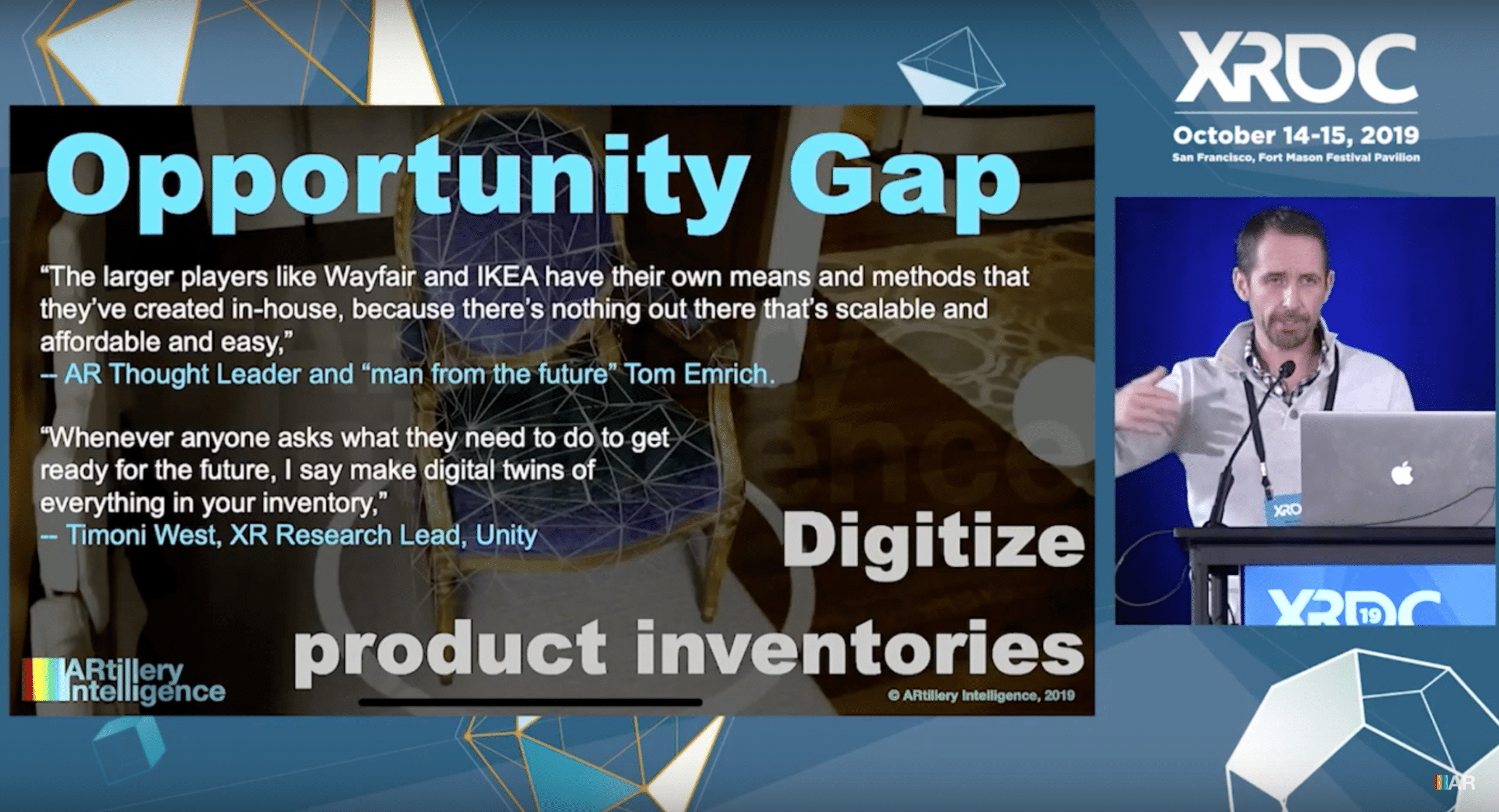
XR Talks is a series that features the best presentations and educational videos from the XR universe. It includes embedded video, as well as narrative analysis and top takeaways. Speakers’ opinions are their own. For a deeper indexed and searchable archive, subscribe to ARtillery PRO.
AR’s biggest revenue category so far is advertising. This is happening as brands are attracted to the technology’s ability to demonstrate products in immersive ways. That appeals to their creative sensibilities, erstwhile stuck in 2D media and confining formats like mobile banner ads.
But as discussed in a recent XRDC presentation from ARtillery Intelligence Chief Analyst Mike Boland* (video below), AR’s appeal in advertising also stems from another attribute: the rare ability to span the consumer purchase funnel. It’s conducive to upper-funnel and lower-funnel formats.
For example, it can achieve high reach distribution on Facebook’s News Feed. From there, it can also achieve high-performance such as users activating AR lenses for product try-ons. The immersive UX can then drive product purchases which brings the use another step down the funnel.
“At the top of that funnel you have things like Super Bowl ads, newspapers and billboards and it’s all about reach. At the bottom of the funnel you have things that are more direct response and targeted and that’s where you see things like search. So you combine those things and AR has the rare ability to compress that purchase funnel. Michael Kors’ Facebook spark AR campaign achieved the reach of the newsfeed but then also stepping further down the funnel the ability for users to then try on the sunglasses, and then go one step further down the funnel to actually purchase them.”

That last step in the funnel — the actual transaction — is obviously the most important. AR’s inherent visualization can boost these conversion rates, but it’s also accelerated by transactional functionality that’s increasingly incorporated into lens-forward channels like Snap and Facebook.
Here, Instagram could be AR’s sleeping giant as we examined recently. Not only did it just flip the switch on AR by opening it up to Facebook’s Spark AR lens developer platform, but it’s increasingly infusing shopping and transactional functionality. This could be a powerful combo.
This all contributes to Artillery Intelligence’s market projections that peg AR advertising at $453 billion in revenue last year, growing to $8.8 billion by 2023. Today that’s mostly AR lenses in social channels, for all the reasons above, but it will start to expand into other areas like visual search.
But true to the promise of the presentation’s title of “what’s working,” what are tactical takeaways? There are several, but one prevalent theme throughout the presentation was how successful AR campaigns (and the ad platforms they’re built on) have a common tread of reducing friction.

For example, with the transactional functionalities mentioned above for Instagram and other lens providers, the entire purchase funnel happens all in one flow. There’s no bouncing users to another app, nor to a website to further browse products and transact. It all happens in one place.
This is a key factor that we examined recently in light of Houzz’ AR commerce best practices. AR isn’t yet proven enough for users to tolerate getting bounced around, or having to download apps. The most successful products are making it as streamlined as possible for users.
“Where we’re seeing success in AR, there’s one common element which is to not erect barriers for users. AR is too early and unproven to get people to go download apps. So it’s this concept of ‘AR as a feature.’ We tend to think of [AR] as this monolithic thing, but it really just should be a component or a feature. And it works best when it’s integrated in this very seamless, organic and additive way in existing places where and consumers already are.”
There’s also a key delineation between advertising and commerce. They flow into each other as advertising’s goal is to drive commerce in the ways mentioned above. But commerce can also happen outside of paid campaigns and placements, such as a company’s own app (like Houzz).

For both advertising and commerce (and their various combinations), the channels themselves are continuing to grow beyond social apps where they reside today. We’re talking messaging and “conversational commerce” as well as in-game AR interstitials and even email activations.
As for where there are opportunities for startups, one of the biggest market gaps is tools to create 3D graphical assets for AR product visualization. Companies like Houzz, IKEA and Wayfair have done this in-house but the market is calling for a company to provide this at scale.
That could really unlock AR commerce by democratizing it for more businesses, especially smaller ones. It could also enable companies with massive catalogs (think Walmart) to scale up the digitization of their inventory cost-effectively. We’re beginning to see this from innovators like 3XR.
“It’s all about these democratization tools. One we believe is definitely missing, where there’s a lot of demand, is the ability to in a scalable way create 3D assets: the sunglasses, the lipstick, all of those AR-visualized products. And to do so at scale, because so far the examples we’ve given are things like Ray-Ban, where they have less than 100 models of sunglasses… but what about when we’re talking about Amazon and Walmart and Home Depot? The ability to do that in a very scalable way is a big opportunity.”
See the full talk below.
For deeper XR data and intelligence, join ARtillery PRO and subscribe to the free AR Insider Weekly newsletter.
*Disclosure: The presentation featured in this article was given by ARtillery Intelligence Chief Analyst Mike Boland. ARtillery Intelligence is the research arm of AR Insider. Disclosure and ethics policy can be seen here.
Header image credit: Facebook
